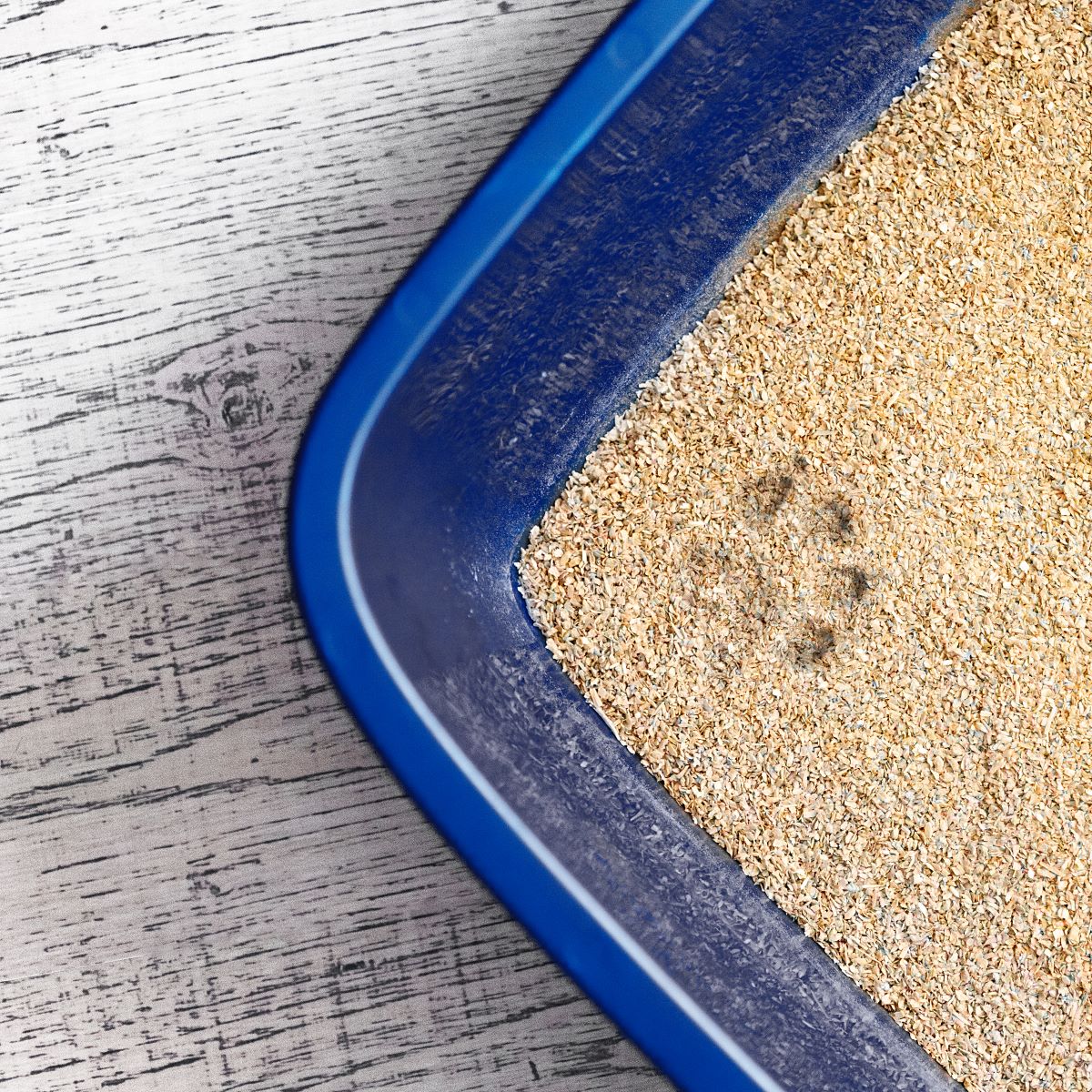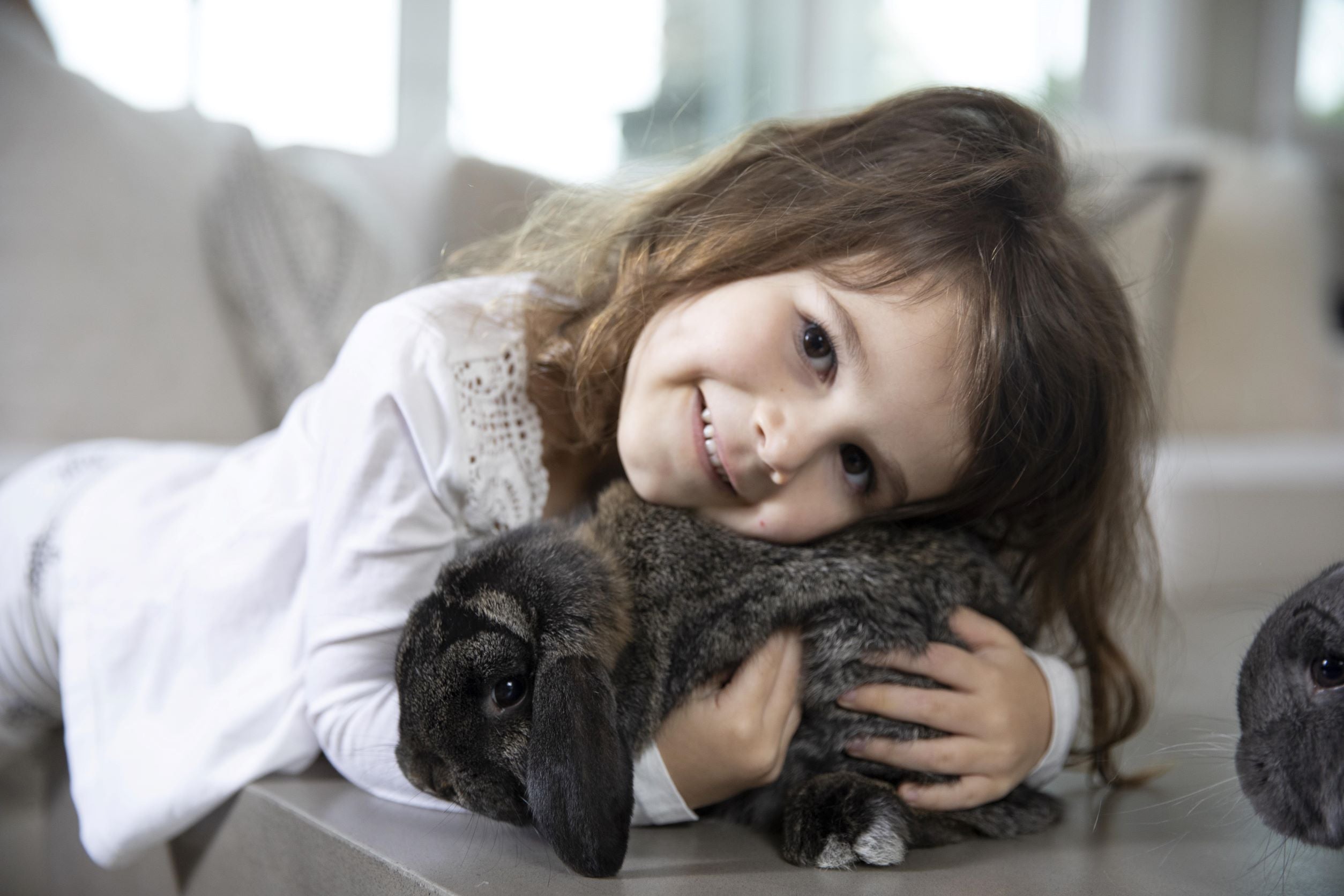How to Raise Well-Trained Cavalier King Charles Spaniel Puppies
Photo courtesy of FreePik
Cavalier King Charles Spaniels are known for their affectionate nature, gentle temperament, and eagerness to please their owner. Unlike some breeds of dog, many consider their loving personalities to be an attractive force, making them excellent companions for families and singles.
However, even with their naturally friendly disposition, they still require early training and structure to develop into a calm, well-mannered adult. If you’re bringing one home or already have a young pup, the right guidance from the start makes all the difference.
What to Know About Cavalier Temperament
Just like any other pet, Cavalier King Charles Spaniels have unique traits that every owner should be aware of before claiming ownership, as they will serve as a guide to ensuring they are properly taken care of and not ill-treated.
A vivid illustration is how they are people-oriented, sensitive, and intelligent, a little more than other dog breeds. Cavaliers also tend to form a close attachment to their owners and crave companionship, which makes training easier in many ways. However, this can also mean they develop undesirable habits if a structured environment is lacking.
When it comes to having fun or following instructions, their eagerness to please is a major advantage; however, without early guidance as well, behaviors such as separation anxiety, jumping, chewing, and excessive barking can grow subconsciously.
Therefore, understanding the temperament of your pet will enlighten you on the dos and don’ts, and for a well-trained Cavalier, abiding by your rules and regulations in the home is not the result of harsh discipline; rather, it should come from gentle correction, positive reinforcement, and consistency from the moment the puppy arrives. Below are further details of things you should take note of and how to go about navigating each phase.
1. Start Training the First Week
When you bring a Cavalier King Charles Spaniel puppy home, training shouldn’t wait a few weeks; instead, it should be a top priority, ensuring it starts within the first few days. Puppies that are eight to ten weeks old are already capable of understanding structure, tone, and simple cues, even if they don’t master them right away.
While your goal should not be aiming towards perfection and getting all signals at once, it is mainly about laying the groundwork for behavior that becomes automatic as they grow. One of the essentials you can begin with is establishing name recognition.
A puppy won’t respond to commands if they don’t know you’re speaking to them. Therefore, start by using their name consistently in a friendly tone, which teaches them to pay attention when they hear it. If possible, avoid using their name when scolding, so it never becomes something they associate with fear or trouble.
The next step is to commence potty training to ensure they don’t litter your personal space. A fun fact about puppies is that they tend to incline more towards repetition and routine. Therefore, taking them to the same spot after waking up and at mealtimes allows them to form a connection between the location and the act.
2. Crate Training for Comfort
Crate training often gets misunderstood by new dog owners, but for well-trained Cavalier King Charles Spaniel puppies, it is always the most valuable part of early training. Instead of thinking of the crate as a cage or restriction, it should be treated and introduced as a place where the puppy can relax without stress or overstimulation.
When a crate feels safe rather than isolating, a puppy will naturally begin to go for sleep and downtime. The size of the crate matters more than most people realize; it should not be oversized, as too much space encourages puppies to oversleep in one corner.
Another big mistake dog owners make is only putting the puppy in the crate when they’re leaving the house. By doing this, they are training the dog to associate crating with being left alone, rather than being part of a normal routine that should be used during naps or bedtime.
3. Socialization
Cavalier King Charles Spaniels are naturally affectionate and gentle, but that doesn’t automatically make them confident in every situation. A puppy can be sweet at home and still grow into a nervous, reactive, or overly dependent adult if they don’t have the right exposure at an early stage.
This is why socialization is not about forcing them into chaotic environments; it should be more about introducing positive actions so that nothing feels unfamiliar or threatening later. Without these early interactions, a Cavalier might become timid around animals outside the home. It is always best to allow them to move outside their comfort zone by meeting other well-behaved dogs, as this helps build social confidence and promotes long-term behavior in public spaces.
4. Exercises and Grooming
A good routine for Cavaliers does not have to be strenuous, as they are mostly okay with either two short walks or one moderate walk each day. Don’t treat this as bathroom breaks, as they are considered opportunities to sniff, explore, and experience the outside world.
Whether it’s a few minutes of fetch in the yard, tug games in the living room, or gentle chase around the house, interaction helps burn energy and strengthen your bond with them. This is why ignoring a Cavalier’s need for activity often results in attention-seeking behaviors that people mistakenly label as disobedience.
In addition, Cavaliers need regular care around their ears, paws, and coat, but many owners wait too long before having them checked. If a puppy isn’t gently touched, examined, and brushed early, grooming later becomes a battle. Hence, introducing brushing, ear checks, nail handling, and even mock vet exams helps them accept touch without fear or resistance.
Endnote
Cavalier King Charles Spaniel puppies possess all the traits of a perfect companion, but effective training is what transforms them into well-behaved dogs. With consistency, affection, and clear expectations, they grow into relaxed, social, and well-behaved adults.
The key is to start early, remain calm, and establish habits before they form on their own. Ensure you do all of these with love, whether you’re teaching manners or even training other breeds of dog; your tone and patience matter as much as the command itself.
Read MoreHow Pet Companionship Helps Gamers Stay Relaxed and Focused
Games demand not only quick reflexes but also deep concentration. This is especially true for esports, where even the smallest mistake can cost a victory. In such moments, maintaining inner balance becomes crucial — and sometimes, it’s not training but a pet that helps achieve it. The presence of a cat, dog, or even a small hamster can reduce stress, restore energy, and bring focus back. In my view, the bond between humans and animals plays a far more significant role in gaming than many tend to realize.
Emotional Release and the Sense of Presence
Pets create an atmosphere of comfort and safety, helping gamers cope with internal tension. Even brief contact with a pet can ease anxiety and restore emotional balance. When a cat curls up nearby or a dog rests by your feet, the brain shifts from a state of stress to one of calm. This effect is especially valuable for those who spend long hours gaming — the pet becomes a kind of grounding presence that gently brings you back to reality.
You could say that animals create a “living space” within a digital world built on reflexes and concentration. Their presence helps maintain focus and prevent emotional burnout. A similar phenomenon can be seen while watching cs2 live streams, where professional players display incredible composure under pressure. Calmness, attention to detail, and emotional control — all these qualities develop through experience, whether it’s a tournament match or a quiet gaming session with a pet by your side.
Many professional players intentionally cultivate a comfortable environment to balance intensity with relaxation. On live streams, it’s common to spot cats or dogs in the background — small details that add warmth and humanity to the setting. For me, pets aren’t a distraction but a natural way to reset the mind, helping me stay focused and composed even during the most stressful moments.
Routine and Focus Through Care
Caring for a pet creates a sense of structure and responsibility that helps gamers avoid burnout and maintain a steady rhythm. When you have an animal, you can’t completely fall out of your routine — you need to feed, walk, play, and care for them on time. These simple tasks build discipline, something often lacking in those who work or play from home. This is especially important for streamers and esports players whose schedules involve 10–12 hours at the computer. Even a short walk with a dog or a quick break to refill a cat’s water bowl becomes a useful pause that restores focus and energy.
Pets essentially help establish balance between gaming passion and everyday life. They encourage movement, shift attention, and prevent mental exhaustion. When you care for an animal, you gain a sense of stability — you’re not just living in a world of screens and competition but existing within a real, natural rhythm. That balance directly affects performance: players with structured days tend to stay attentive and calm for longer. Many gamers admit that their pets help them “stay in shape,” both physically and emotionally.
I’ve noticed that more and more professional players openly share how caring for animals helps them stay motivated. On Twitter, Instagram, and live streams, it’s common to see cats, dogs, or even parrots as part of their daily routine. For some, a pet represents stability; for others, a reminder of the simple joys beyond competition. And it truly works — by caring for an animal, a person unconsciously takes better care of themselves. It’s not just a break from gaming; it’s a form of reset that helps preserve focus and emotional resilience over the long run.
Social Support and a Sense of Connection
Pets often become a kind of “teammate” in real life. They don’t need explanations or evaluate wins and losses — they simply stay close, creating a sense of comfort and emotional support. In moments of fatigue or after a tough match, their presence can do more than words ever could. When a cat quietly curls up next to you or a dog greets you after a long gaming session, it creates a feeling of connection and acceptance — something often missing in the world of constant online communication.
Animals provide something even close teammates sometimes can’t — unconditional acceptance. They don’t care about your last match score or game stats; they just give you that comforting feeling of “home,” helping you recover emotionally. After defeats or long practice sessions, these small moments act as real therapy: anxiety fades, thoughts clear up, and energy for new challenges returns.
In many ways, pets play the same role as brief post-tournament talks with teammates — they help release tension and remind you that there’s more to life than what happens on screen. This quiet bond forms a strong foundation for inner stability. For me, such moments are especially valuable: they restore balance and remind me that no match or ranking can replace the simple, genuine warmth of an animal by your side.
Pets as a Source of Inspiration
Pets can inspire not only emotionally but also creatively. They become part of our daily rhythm, and simply observing their behavior can spark ideas that later find life in art, games, or other forms of expression. Many artists, musicians, and game designers admit that their animals helped them discover new imagery, themes, or creative approaches. A simple walk with a dog or watching a cat chase sunbeams can lead to unexpected solutions or even inspire the creation of entire worlds.
This is especially evident in the gaming industry. For instance, the developers of Stray were inspired by their own cat’s behavior to craft the realistic movements and emotions of the main character. In Minecraft and The Sims 4, pets became more than just background elements — they symbolize comfort and stability, that sense of “home” every player seeks. Even in more dynamic titles like Final Fantasy XV or Spiritfarer, animals serve as emotional anchors, helping both heroes and players maintain their connection to the human side of the story.
I believe animals remind us of the importance of sincerity and simplicity — qualities often lost in the pursuit of achievement. They don’t perform or pretend; they simply exist, inspiring us by being genuine. That’s why pets become an essential part of not only our real lives but also our creative imagination, helping build worlds filled with warmth, empathy, and meaning.
Conclusion
In my view, pets are more than companions — they’re an essential part of a gamer’s mental balance. They help manage stress, maintain emotional stability, and even improve focus. In a world where digital pressure is constantly increasing, having a living being nearby serves as a reminder of simple, human things. And perhaps that’s what truly makes us more resilient — not just as players, but as people.
Read MoreLitter vs. Bedding: What’s Best for Your Small Pet?
If you share your home with a bunny, guinea pigs, ferrets, or hamster, you already know—these little pets bring big joy (and sometimes big messes).
The secret to keeping them cozy, clean, and your home smelling fresh? Knowing the difference between bedding and litter—and how to use both like a pro.
What’s the Difference Between Bedding and Litter?
Think of bedding as your pet’s cozy mattress. It’s soft, comfy, and perfect for snuggling, nesting, and lounging.
Litter, on the other hand, is the “bathroom zone.” It’s designed for absorption and odor control, usually placed in a corner litter box or a specific potty area.
When you use both correctly, you get the best of both worlds—happy pets and easier cleanup.
🐇 Rabbits
Rabbits are naturally tidy and can actually be litter trained!
Bedding: Use soft, absorbent natural paper bedding in their main living space.
Litter: Set up a litter box filled with natural, absorbent paper or wood-based litter such as carefresh Rabbit & Ferret Litter.
🧺 Pro tip: Avoid clay or clumping litters—they can be harmful if your bunny decides to nibble.
🐹 Guinea Pigs & Hamsters
These little burrowers love to dig, tunnel, and nap the day away.
They need thick, soft bedding that’s gentle on tiny feet and helps control odor.
Try natural paper bedding like carefresh®, made from ultra-soft, sustainable paper fiber that stays fresh longer between cleanings.
Avoid using litter alone—it’s not comfortable or safe for nesting.
🦦 Ferrets
Ferrets are playful and surprisingly clean! Most will pick a corner to go potty, so adding a small litter box is key.
Bedding: Soft paper bedding for resting and play.
Litter: Dust-free, absorbent litter in their potty area.
Place the litter box where your ferret naturally likes to go—it makes training easy!
🌿 Why Natural Materials Matter
Your small pet’s lungs (and yours!) will thank you for choosing natural, low-dust materials.
Natural paper and wood fiber beddings:
Keep the air cleaner
Control odor naturally
Are compostable and biodegradable
That means a happier pet and a greener planet. 🌎
💚 The Perfect Combo
For the happiest, healthiest habitat:
Bedding for softness and warmth
Litter for cleanliness and odor control
Your pet will love their cozy, fresh-smelling setup—and you’ll love how easy it is to maintain.
Give Them the Comfort They Deserve
carefresh® natural paper bedding is made from sustainable, reclaimed paper fiber that’s ultra-soft, super absorbent, and naturally controls odors for up to 10 days.
It’s the easiest way to keep your small pet’s home fresh, comfy, and planet-friendly.
🛏️ Learn more at carefresh.com
Read MoreEssential Gear for Recording Your Pet's Milestones and Adventures
Pets are more than companions—they’re family. Every wagging tail, clumsy leap, or unexpected milestone is part of their story, and many owners want to capture those memories to look back on for years to come.
Recording your pet’s adventures is not just about creating cute content; it’s also about preserving moments that reflect their unique personality.
Technology has made documenting pets easier than ever. From simple cameras to wearable gadgets, the right tools can help you capture everything from their first day at home to their most daring outdoor explorations. With the right gear, you’ll be ready to turn everyday moments into treasured memories.
Choosing the Right Camera
At the heart of recording your pet’s milestones is a reliable camera. Whether you’re filming your cat’s playful leaps or your dog’s first beach trip, a quality device ensures you don’t miss the details. The best choice depends on your lifestyle and the kind of adventures you want to capture.
For those who want to record immersive experiences, a 360 camera is an excellent option. It allows you to film in all directions at once, so you never miss the action—even if your pet suddenly bolts out of frame. This kind of camera is especially useful for energetic animals that rarely sit still.
Action Cameras for On-the-Go Fun
Pets love to move, and action cameras are built to keep up with their energy. Compact, durable, and often waterproof, these devices are perfect for outdoor play, hikes, or trips to the park.
With wide-angle lenses and image stabilization, they can handle the unpredictable motion that comes with filming pets.
Some action cameras can even be attached to your pet’s harness, giving you a “pet’s-eye view” of their adventures. Just be sure the gear is lightweight and comfortable, so it doesn’t interfere with your pet’s natural movement.
Smartphone Tools and Add-Ons
For many pet owners, the easiest recording device is already in their pocket. Modern smartphones come equipped with high-quality cameras capable of capturing video and photos in stunning detail.
With the right settings, you can take slow-motion videos of playful jumps or crisp portraits of your pet lounging at home.
Accessories can make smartphone recording even better. Tripods, clip-on lenses, and remote shutters add versatility, while editing apps help polish the final product. The convenience of smartphones makes them ideal for spontaneous moments you don’t want to miss.
Audio Equipment for Capturing Personality
Recording isn’t only about visuals—sound adds depth to your pet’s story. From the joyful bark of a dog greeting you at the door to the soothing purr of a cat on your lap, audio brings your recordings to life. Investing in a small microphone or audio recorder can make a big difference.
Some cameras come with built-in microphones, but external ones often deliver clearer results. Directional microphones help isolate your pet’s sounds while reducing background noise, ensuring those memorable barks, meows, or chirps aren’t lost.
Lighting Tools for Clearer Shots
Good lighting can turn an ordinary clip into something extraordinary. Natural light often works best, especially for outdoor shots where pets are most active. Indoors, however, lighting can be trickier, and dim conditions may cause videos to look grainy.
Ring lights, portable LED panels, or clip-on smartphone lights can brighten up indoor scenes. With better lighting, you’ll be able to capture sharp, vibrant images that showcase your pet’s expressions and movements clearly.
Editing Software to Tell the Story
Capturing raw footage is only the first step. Editing allows you to craft a narrative, highlight milestones, and share polished clips with friends and family. User-friendly software makes it possible to trim, add music, and create sequences that showcase your pet’s best moments.
Many editing programs also offer fun features like filters, slow-motion effects, or text overlays. Whether you’re documenting a puppy’s growth or putting together a compilation of your parrot’s funny phrases, editing helps bring structure to your pet’s story.
Sharing Memories with Community
Pets often bring people together, and sharing their stories can spread joy beyond your household. Social media platforms, private family groups, or even printed photo albums are all ways to showcase your recordings.
Documenting milestones not only celebrates your pet but also connects you with others who understand the bond between humans and animals.
When sharing publicly, always prioritize your pet’s comfort and privacy. Avoid situations that could stress them out just for the sake of a recording. The goal is to honor their life in a way that reflects care and respect.
Capturing the Heart Behind the Lens
Recording your pet’s milestones is about more than gadgets and gear. It’s about noticing the little moments that make them unique and cherishing the time you have together. Technology simply gives you the tools to hold onto those memories more vividly.
Every wag, leap, and purr tells a story worth keeping. By choosing the right equipment and approaching the process with patience and love, you’ll create lasting reminders of the joy pets bring into your life.
Read MoreTips for Traveling with Your ESA
Image source: https://unsplash.com/photos/closeup-photography-of-woman-holding-adult-golden-retriever-sWkkIiTJMYc
A Brief Overview of Emotional Support Animals
An Emotional Support Animal is a companion that helps individuals manage mental or emotional health challenges. Providing comfort through their presence, ESAs can alleviate feelings of stress, anxiety, or depression.
Unlike service animals, ESAs do not require formal training to perform tasks. Their primary role is to offer emotional stability rather than physical assistance.
For those in the U.S. looking to get an ESA, securing a letter from a licensed mental health professional is essential. If you're in Texas, you can access information specific to the state through this Texas ESA letter guide.
This document certifies your need for the support the animal provides and ensures compliance with applicable regulations.
Visiting Restaurants with Your ESA
Many restaurants offer pet-friendly patios, allowing both you and your furry friend to enjoy a relaxed dining experience.
Some top places to try are:
Trendy Diners: Enjoy brunch dishes with your ESA at your side.
Cozy Coffee Shops: Sip freshly brewed coffee in a welcoming atmosphere.
Craft Breweries: Delight in locally crafted beers with great patio service.
Burger Joints: Savor delicious, high-quality burgers alongside your companion.
Dining out with your ESA is easy, thanks to pet-friendly spots that let you enjoy great food and quality time simultaneously.
Exploring Parks with Your ESA
Explore the great outdoors with plenty of green spaces offering trails and designated off-leash areas:
Spacious Parks: Perfect for giving your ESA some freedom to roam safely.
Urban Parks: Featuring serene paths and beautiful natural settings.
Parks with Panoramic Views: Ideal for peaceful walks and breathtaking scenery.
Riverside Spots: Great for exploration and enjoying diverse terrain.
These parks offer the perfect mix of outdoor fun and bonding time with your ESA, whether you seek scenic views, quiet trails, or open spaces to play.
Dog-Friendly Hotels
Planning an overnight stay? Look for hotels that welcome pets, providing comfort and convenience for you both.
Consider:
Boutique Hotels: Stylish rooms with a welcoming pet policy.
Extended-Stay Options: Near great walking trails.
Luxury Accommodations: Tailored amenities for pet owners.
Modern Spaces: Embracing simplicity and ESA-friendly services.
These hotels make sure your trip is stress-free and inclusive of your furry companion.
More Tips for Traveling with Your ESA
Traveling with your ESA can be rewarding with some preparation:
Check pet policies for airlines, buses, or accommodations ahead of time.
Bring your ESA letter to avoid issues in public spaces.
Carry essentials like water, snacks, and waste bags during outings.
Focus on pet-friendly amenities such as outdoor patios or parks, and keep your ESA leashed unless in designated off-leash areas.
With thoughtful planning and awareness of local guidelines, your journey with your ESA becomes an enjoyable adventure for both of you!
Read MoreFilter - Key Words








 email us
email us